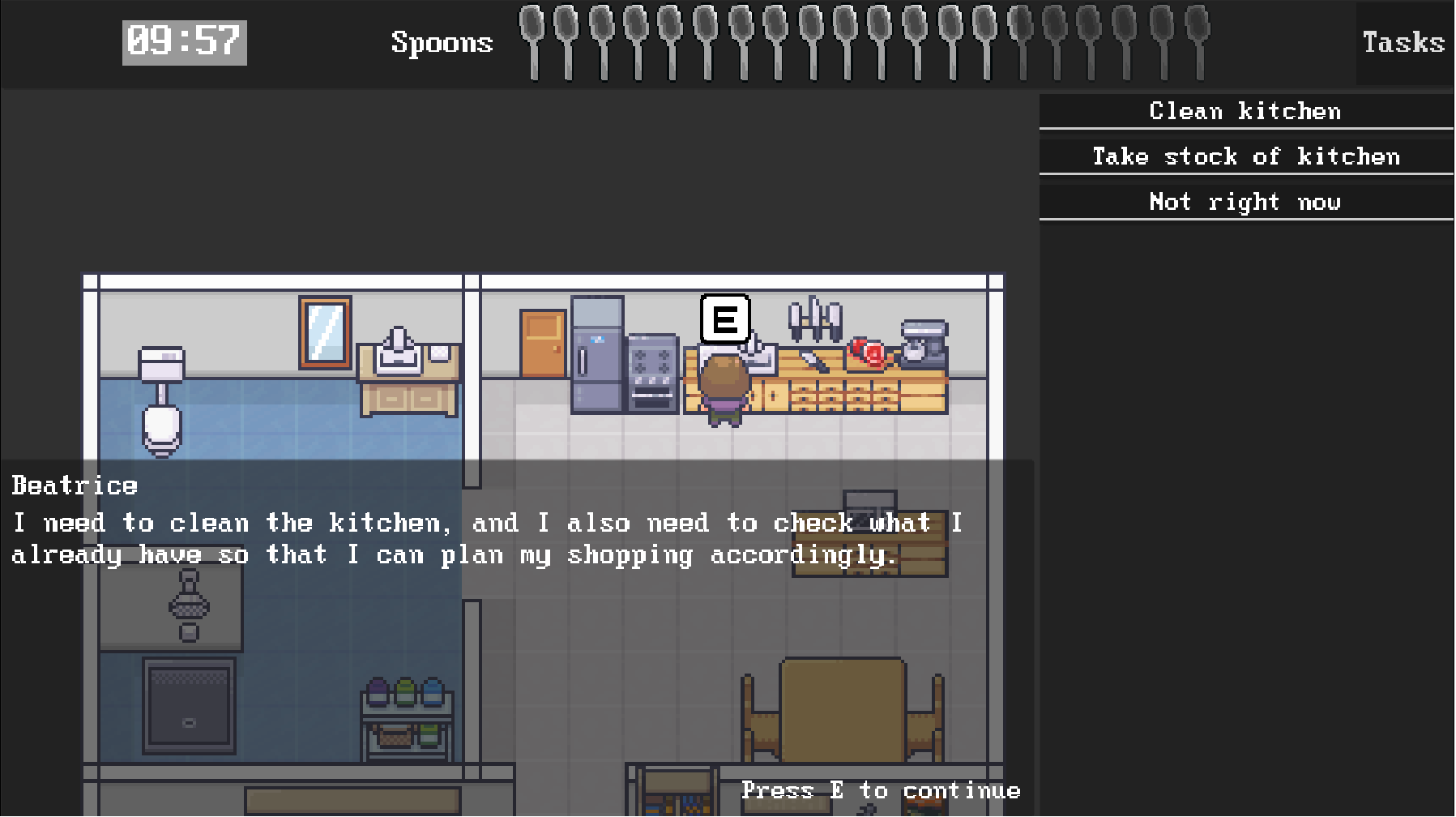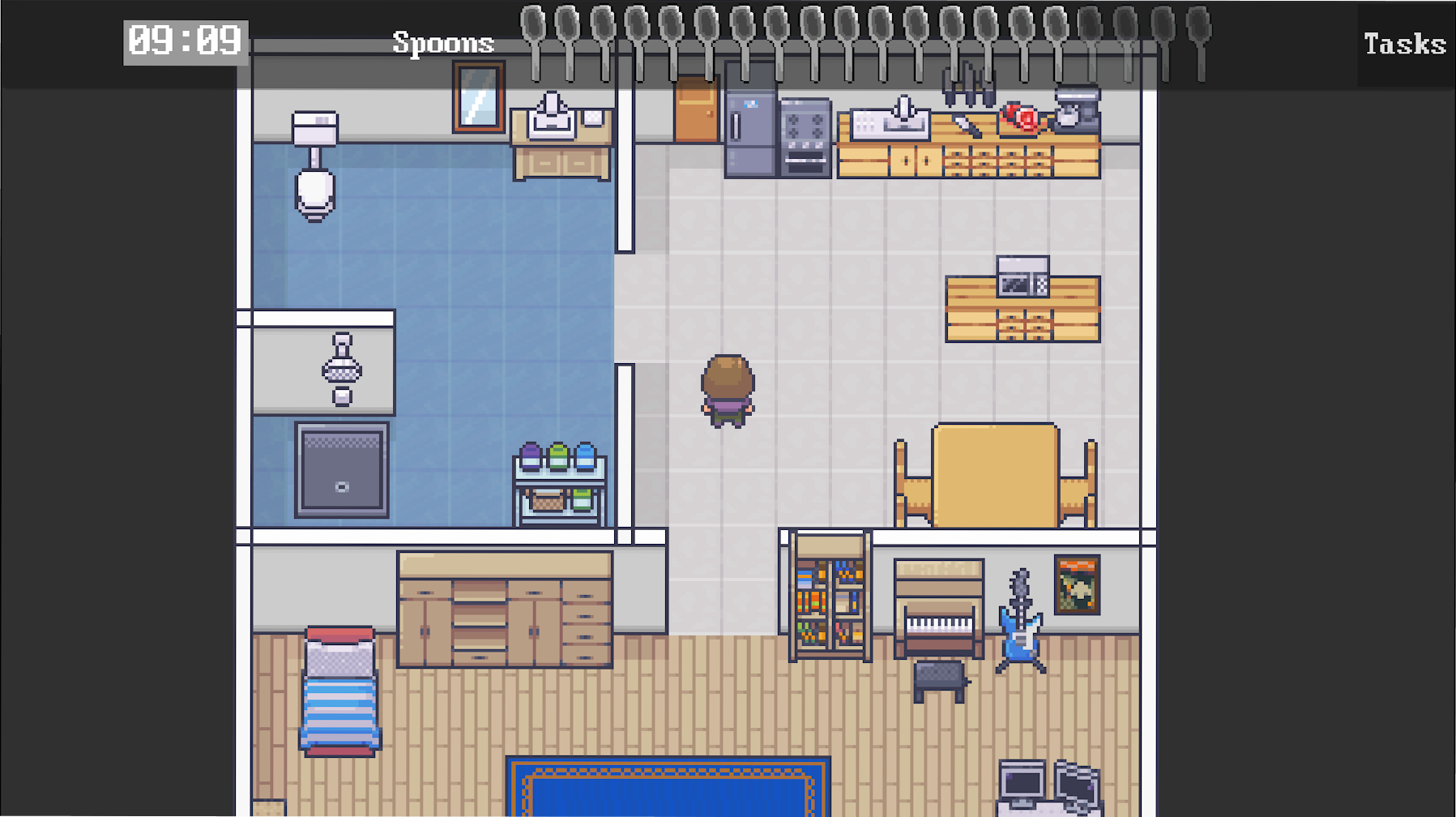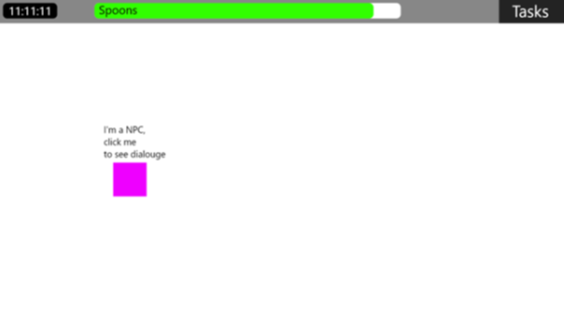


My Thesis game, where we tried to develop a game which represents Autism. I acted as the lead designer and was responsible for: level design, UI, UX, writing, plot, gameplay, and testing.
The full game can be found here.
Details
Designing reunion was a research heavy task, the goal of the game was primarily to identify better ways of representing autism in games, the main way I decided to go about that was to first research existing games which attempted to represent autism and identify both the problems with their approaches and the strong aspects of their approaches.
After that was done, I decided to follow an overarching design approach; here, I decided to follow the attunement approach as defined by Meinen, L. E. (2023). This design approach informed how I went about designing the different systems for the game.
I decided to focus my attention on narrow aspects of autism due to the scope of the game. Specifically, I chose to focus on executive dysfunction and energy as it pertains to people with autism.
For executive dysfunction, I decided to focus on doing tasks and having the player become “naturally” overwhelmed by the number of tasks that they had to do. In order to communicate this I designed a task system which, after it was implemented by Iride my programmer co student, I used to implement a number of tasks for the player to do during the the game day, as well as some hidden tasks which would only appear if the player interacted with the world, which I tried to encourage via plenty of world interactions.
Other than executive dysfunction, I also wanted to show how energy can be a different thing for people with autism; this aspect also played well into executive dysfunction since these two aspects of the diagnosis often play into each other. The way I decided to do this was via an energy meter; however, to distinguish it from more stereotypical energy meters in games, energy would not be restored via food or sitting down. Instead, I decided that energy would only be restorable via specific activities, which would take a lot of time. Furthermore, I decided to complicate it by adding a max energy variable, which would also go down during the game, thus giving the player even less energy to do the overwhelming number of tasks.
Both these systems depend on the game having strict time limitations. If the player can just constantly relax with no repercussions, then the game fails to communicate the real work of living with the diagnosis. Thus, I decided that the game needed a clock that would constantly tick along and limit the amount of stuff the player could accomplish by making each task take up a significant amount of time.
Showing all of these aspects to the player was, of course, a challenge, and the game needed a strong UI that could communicate these three major systems to the player in a clear and accessible way. I started by designing a prototype in Figma for how the HUD of the game should look to communicate all the systems.


This UI was then implemented in Godot. We decided to call energy "spoons" as it is a common term in autism communities for energy.
The energy meter was by far the most complicated aspect as it needed to show three distinct variables: how much energy does the player have, how much energy are available to be recharged, and how much max energy has been lost.
This was handled by two different energy bars, layered on top of each other with one going right to left and the other going the opposite way.



